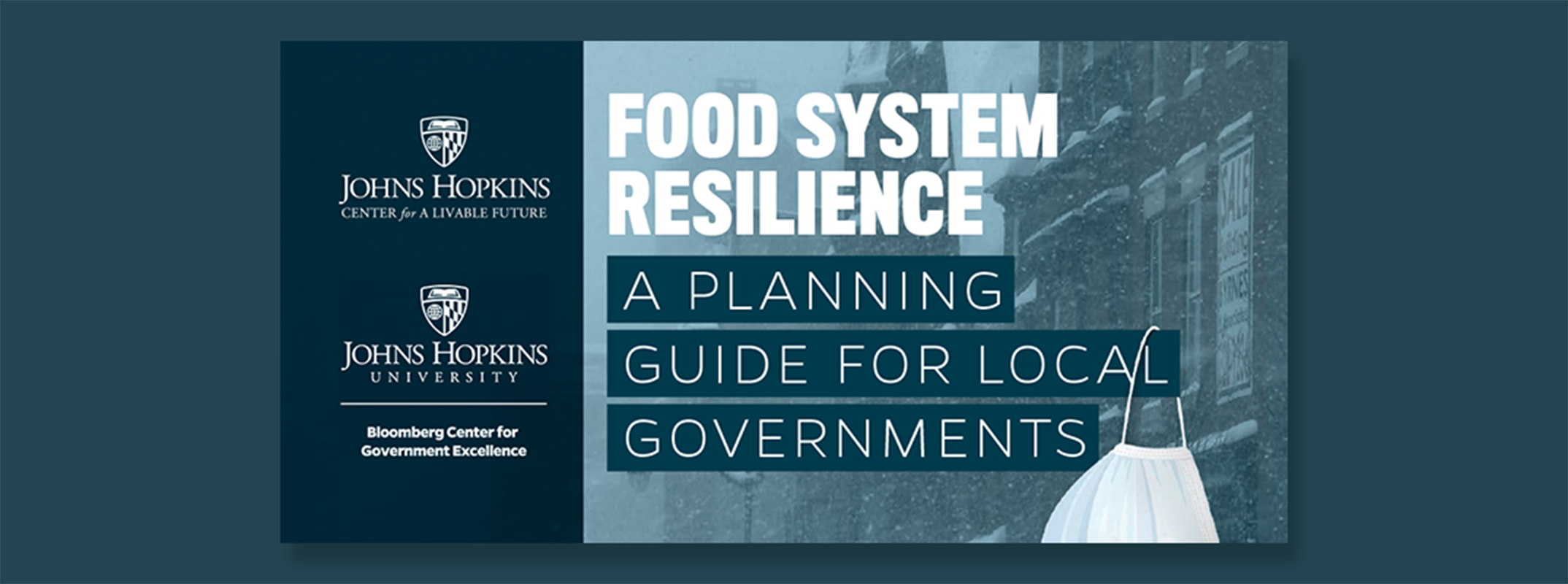City Impact
Food System Resilience
In 2022, The Johns Hopkins Center for a Livable Future (CLF) and the Bloomberg Center for Government Excellence released a new tool, Food System Resilience: A Planning Guide for Local Governments, which aimed to help local governments prepare for food systems disruptions caused by natural and human-made disasters.

GovEx’s Data Points podcast discussed the overall project and a case study about its impact in Colorado in two episodes:
- Data Points Podcast #80: Food System Resilience: A Planning Guide for Local Governments
- Data Points Podcast #90: Strengthening Community Food Systems: Resilience Strategies in Adams County, Colorado
You can read more about the work and five top recommendations for improving resiliency at Route Fifty.
Implementation Examples
Since CLF and GovEx released the guide, many cities have asked to see practical examples of how others are utilizing the tools and resources within it. To that end, we have collaborated with several cities to compile a curated list of resources, along with a general roadmap of how to work through the planning guide. These materials showcase real-world applications of the tools included in the guide, offering valuable insights and practical templates for other cities to adapt and implement in their food system planning efforts.
- Planning Guide Roadmap
- Sample Roadmap in Action – Adams County, CO
- Sample Completed Toolkit – Calgary, AB, Canada
- Sample Tool #6, Asset Inventory – Montgomery County, MD
- Sample Tool #8, Vulnerability Assessment – Austin, TX
- Sample Interagency Convening Meeting Resources – Montgomery County, MD
Food System Indicators List
We have compiled a comprehensive resource that consolidates publicly available food system resilience indicators from across the sector. These indicators—metrics used to track progress, monitor change, or evaluate outcomes over time—are designed to help planners and policy makers identify and track variables most-relevant to their local goals and needs.
- How to use the Food System Indicator Resource
- Food System Resilience Indicators Airtable
- Resilience Indicators Methodology
Further Research
In a new article published in the journal Frontiers in Sustainable Food Systems, GovEx Community Manager Meg Burke and colleagues at the Johns Hopkins University School of Public Health find that cities with seven key attributes—preparedness, connectivity, capital reserves, diversity, redundancy, flexibility, and equity—are likely better able to keep their residents fed in times of crisis. Read the article about how these qualities showed up in local responses, what helped or hindered the implementation of the attributes, and what programs or policies could make it easier for cities to build these strengths ahead of future emergencies.
City Impact
GovEx has a track record of working with cities to implement strategies and policy interventions that lead to equitable outcomes and transform the standard of living for residents.
Baltimore
GovEx’s work in Baltimore, the organization's home base, includes many evidence-based governance projects through four mayoral administrations.
